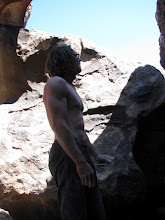 Leonardo da Vinci began painting the Mona Lisa in 1503, during the Italian Renaissance and, according to Vasari, "after he had lingered over it four years, left it unfinished...."[5] He is thought to have continued to work on it for three years after he moved to France and to have finished it shortly before he died in 1519.[6] Leonardo took the painting from Italy to France in 1516 when King François I invited the painter to work at the Clos Lucé near the king's castle in Amboise. Most likely through the heirs of Leonardo's assistant Salai,[7] the king bought the painting for 4,000 écus and kept it at Château Fontainebleau, where it remained until given to Louis XIV. Louis XIV moved the painting to the Palace of Versailles. After the French Revolution, it was moved to the Louvre. Napoleon I had it moved to his bedroom in the Tuileries Palace; later it was returned to the Louvre. During the Franco-Prussian War (1870–1871) it was moved from the Louvre to a hiding place elsewhere in France.
Leonardo da Vinci began painting the Mona Lisa in 1503, during the Italian Renaissance and, according to Vasari, "after he had lingered over it four years, left it unfinished...."[5] He is thought to have continued to work on it for three years after he moved to France and to have finished it shortly before he died in 1519.[6] Leonardo took the painting from Italy to France in 1516 when King François I invited the painter to work at the Clos Lucé near the king's castle in Amboise. Most likely through the heirs of Leonardo's assistant Salai,[7] the king bought the painting for 4,000 écus and kept it at Château Fontainebleau, where it remained until given to Louis XIV. Louis XIV moved the painting to the Palace of Versailles. After the French Revolution, it was moved to the Louvre. Napoleon I had it moved to his bedroom in the Tuileries Palace; later it was returned to the Louvre. During the Franco-Prussian War (1870–1871) it was moved from the Louvre to a hiding place elsewhere in France.Dr. Lillian F. Schwartz of Bell Labs suggests that the Mona Lisa is actually a self-portrait. She supports this theory with the results of a digital analysis of the facial features of Leonardo's face and that of the famous painting. When a self-portrait drawing by Leonardo is reversed and then merged with an image of the Mona Lisa using a computer, the features of the faces align perfectly.[15] Critics of this theory suggest that the similarities are due to both portraits being painted by the same person using the same style. Additionally, the drawing on which she based the comparison may not be a self-portrait. Serge Bramly, in his biography of Leonardo, discusses the possibility that the portrait depicts the artist's mother Caterina. This would account for the resemblance between artist and subject observed by Dr. Schwartz, and would explain why Leonardo kept the portrait with him wherever he traveled, until his death.





No comments:
Post a Comment